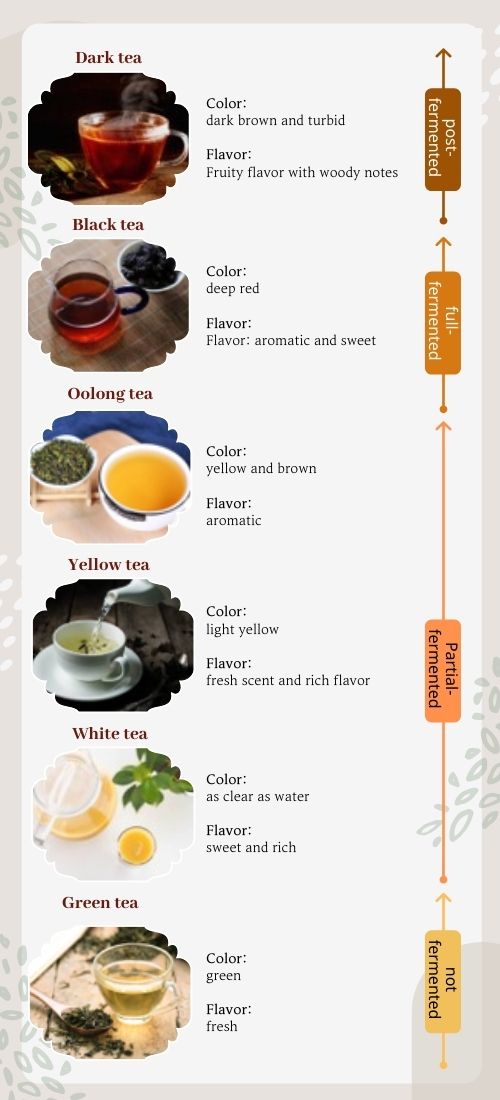► Analysis on the tea production
Tea around the globe can be classified into six categories based on its degree of fermentation and manufacturing process: drak tea, black tea, Oolong tea (semi-fermented tea), yellow tea, white tea and green tea. In addition, some people suggest to add scented tea as a category, but it is not listed here due to the difference of tea manufacturing technology. Fermentation means to soak fresh tea leaves in water and keep blending it with force. With lower degree of fermentation, tea would taste fresh and natural; with a higher degree of fermentation, tea would taste rich, sweet and bitter.
First of all, let’s talk about green tea. The production method of green tea is different compared to other types of tea. The process doesn’t involve tossing, that is, the step of facilitating the fermentation of fresh tea leaves through stirring continuously. The taste of yellow tea contains a scent like chestnut. Yellow tea is rarely purchased by Taiwanese, but it is treated as a specialty in China. Similar to yellow tea, white tea is rarely manufactured in Taiwan. Its name comes from the delicate fine hairs it has. After brewing, its taste and color are both similar to water. The production of white tea is only composed of two steps, which is the simplest one among all types of tea. It is said that after preserving white tea for more than 3 years, it can be serve as medicine. If it is preserved more than 7 years, it will become a treasure for regimen. It can be seen from this that tea has no expiration date. The longer you preserve it, the better it smiles.
Semi-fermented is usually known as Oolong tea. It has the fresh fruity scent of green tea and the rich and sweet tase. That is why tea lovers praise Oolong tea’s scent in the saying “green tea taste fresh, black tea taste bitter, and Oolong tea smiles the best”. If the form of tea leaves is spherical, it is suitable to be made into Oolong tea or Tieh-guan-yin tea. If the degree of fermentation (oxidation) is lower, it would be strip-type Paochong tea. In addition, during the brewing process, it is crucial to control the time you brew Oolong tea. It becomes astringent once the brewing time is too long. As we all know, the production amount of black tea accounts for 70% percent of the production amount of tea. The most popular honey-flavored black tea was Oolong tea in the beginning. After sucking by tea green leafhopper, it turns into ugly-looking tea leaves called “saliva-added.” Then, it is processed the same way as black tea, and turns into a kind of black tea with distinctive honey and Osmanthus scent.
Last but not least, dark tea is the one with the strongest fermentation, and its color is a turbid kind of black. Although it is rarely seen in Taiwan, it is common in China. Its scent has both woody notes and fruity notes. To produce dark tea, “ferment in pile”: is a required skill. “Ferment in pile” is the process of pilling up fresh tea leaves to around 70 cm high, spilling water on it, and covering it with line. It is mean to facilitate the effect of tea enzyme. After fermenting under the warm and damp environment for about 24 hours, and the tea has transformed to an extent, it should be spread out to dry. The function of “ferment in pile” is to make its taste more sweet, smooth, and rich. Many people are reluctant to drink it too quick, for it has the same characteristic of white tea—the longer it is preserved, the better it smiles. One of the commonly heard black tea is Puerh tea.


